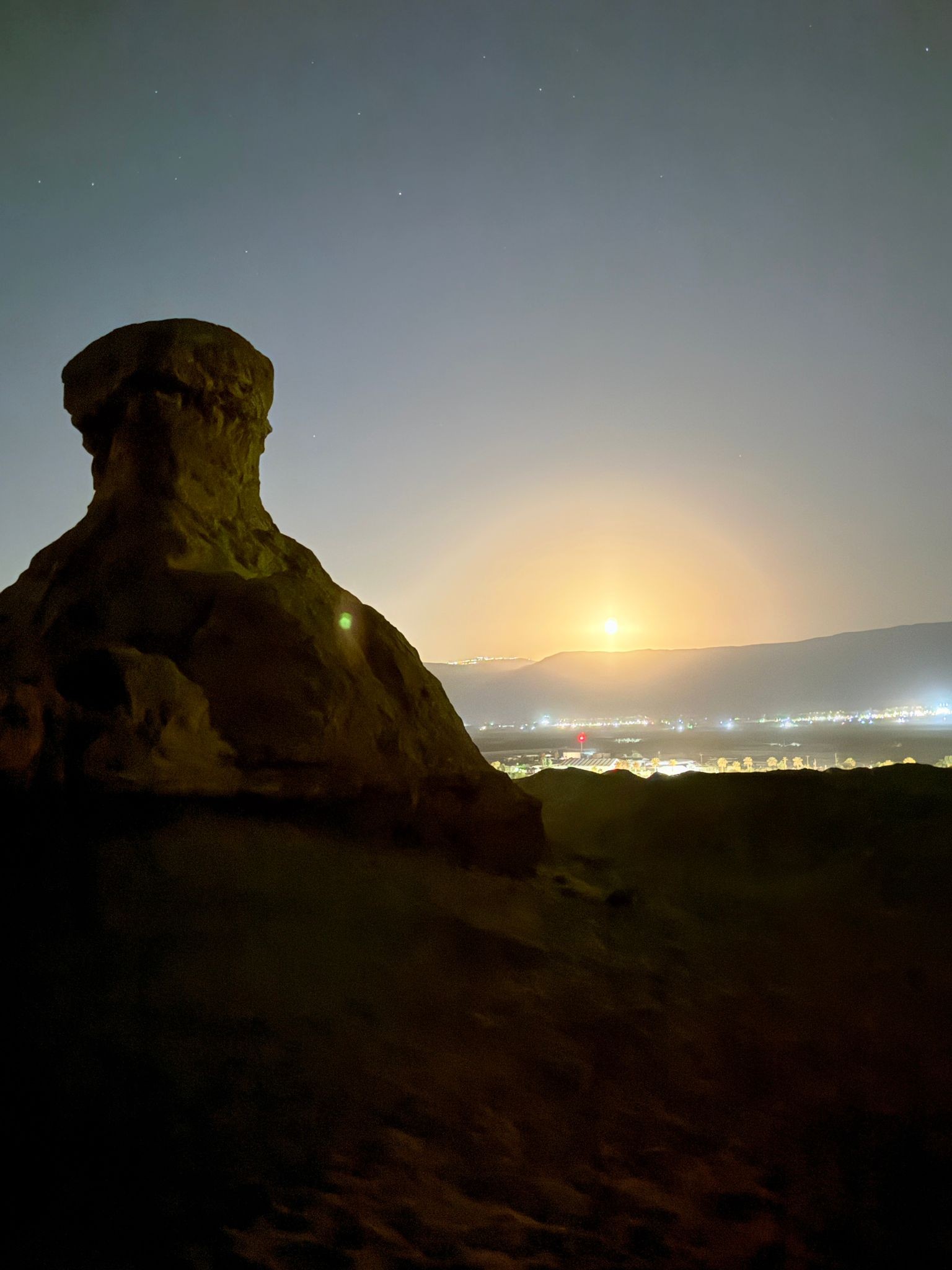When the Desert Drowns: The Vulnerability of Isolated Communities During Flash Floods
The recent devastating cloud burst over Ein Gedi in Israel’s Dead Sea region serves as a stark reminder of how swiftly nature can transform tranquil desert landscapes into chaotic disaster zones. When flash floods strike isolated desert communities like Ein Gedi, Neot HaKikar, and Ein Tamar, the consequences extend far beyond the immediate water damage. […]

The recent devastating cloud burst over Ein Gedi in Israel’s Dead Sea region serves as a stark reminder of how swiftly nature can transform tranquil desert landscapes into chaotic disaster zones. When flash floods strike isolated desert communities like Ein Gedi, Neot HaKikar, and Ein Tamar, the consequences extend far beyond the immediate water damage. These communities, all part of the Tamar Regional Council and situated far from major urban centres, face unique challenges that can quickly escalate into humanitarian crises. This article examines the complex impacts of flash flooding on desert communities and explores strategies for building greater resilience.
The Anatomy of Desert Flash Floods
Flash floods in desert regions are particularly dangerous for several fundamental reasons. Desert soils, typically hard and clay-like, absorb water poorly, dramatically increasing runoff volumes that rivers and water channels must handle. When intense rainfall occurs, especially after prolonged dry periods, the parched ground becomes almost impermeable, causing water to flow rapidly across the surface rather than seeping into the soil.
This phenomenon is intensified in mountainous desert regions like the area surrounding Ein Gedi, where steep terrain accelerates water flow. Studies of flash floods in the Negev Desert have shown that water depths can change dramatically in minutes, with researchers recording instances where depth increased by 32 cm over a distance of just 3.5 meters, and flows reaching depths of 90 cm in less than three minutes.
The unpredictable nature of these events makes them particularly lethal. Flash floods cause more fatalities in the United States on average than lightning, tornadoes, or hurricanes, and the danger is even more pronounced in desert regions.
Infrastructure Vulnerabilities in Isolated Communities
When flash floods strike isolated desert communities like Ein Gedi, they expose critical infrastructure vulnerabilities:
- Road Networks: As demonstrated by the current situation at Ein Gedi, flooding can completely sever road connections, cutting off communities from essential supplies and emergency services. When both northern and southern access routes become impassable due to flooding, mudslides, or debris, these communities become effectively isolated islands.
- Power Infrastructure: Electricity networks in remote areas often lack redundancy. Flooding or landslides can damage utility networks, leading to prolonged power outages that affect everything from water pumping to refrigeration and communications. This vulnerability is compounded in desert regions where high temperatures make electricity even more critical for cooling and water management.
- Water Systems: The irony of flash floods is that they often compromise clean water supplies. Treatment facilities may be damaged, pipes ruptured, and contamination introduced into water systems. In Ein Gedi’s case, the disconnection of public toilets illustrates how rapidly sanitation infrastructure can fail.
- Communication Networks: When cellular towers or internet infrastructure are damaged, isolated communities lose vital connections to emergency services and information sources. This communication breakdown hampers both rescue efforts and recovery planning.
- Food Security: With supply lines cut, food security quickly becomes a pressing concern. Desert communities typically maintain limited inventory due to storage constraints and distance from distribution centres, making them especially vulnerable to prolonged isolation.
Social and Economic Impacts
The social fabric of isolated desert communities faces unique stresses during flood events:
- Community Displacement: As witnessed in Ein Gedi, residents unable to return to their homes must seek shelter elsewhere, often relying on neighbouring communities like Mizpe Shalem. This displacement creates immediate humanitarian needs and disrupts social cohesion.
- Economic Disruption: The Tamar Regional Council communities rely heavily on agriculture, tourism, and light industry that can be devastated by flooding. Neot HaKikar and Ein Tamar are particularly vulnerable as agricultural moshavim where approximately 70% of produce is destined for export. When roads are cut off, perishable crops cannot reach markets, threatening both immediate income and long-term economic stability. The communities grow specialty crops including peppers, winter-ripening vegetables, melons, and organic medjool dates that thrive in the unique desert conditions but depend on consistent access to markets.
- Historical Trauma: The communities have experienced previous disasters related to extreme weather. In December 1970, Neot HaKikar was the site of one of Israel’s worst natural disasters when heavy rains caused rocks to detach from an overhanging cliff, crushing an army base dining room and killing 19 soldiers and one civilian. This historical context creates additional layers of anxiety when extreme weather events occur.
- Mental Health Challenges: The trauma of experiencing flash floods, combined with the stress of displacement and uncertainty, creates significant mental health burdens that often receive inadequate attention during disaster response. For residents in remote desert communities with limited mental health resources, these impacts can be particularly severe.
Building Desert Community Resilience
Despite these challenges, there are proven strategies for increasing the resilience of isolated desert communities:
- Advanced Forecasting and Warning Systems: Experts emphasize that delivering more accurate projections and implementing real-time forecasting is essential to helping vulnerable communities better prepare for flooding events. Early warning systems tailored to desert environments can provide crucial time for evacuation and preparation.
- Infrastructure Adaptation: Infrastructure solutions like canals, culverts, flood channels, and stormwater retention basins can help limit flash flood impacts. These systems must be designed specifically for the unique hydrology of desert regions.
- Redundant Essential Services: Communities can increase resilience by implementing backup power systems (including solar with battery storage), maintaining emergency water supplies, and establishing multiple communication pathways.
- Community-Based Emergency Planning: Well-prepared communities develop and regularly practice emergency response plans, including evacuation procedures, designated shelter locations, and strategies for supporting vulnerable populations.
- Regional Support Networks: Formalized mutual aid agreements between desert communities can provide crucial support during crises, as demonstrated by Mitzpe Shalem’s hosting of Ein Gedi residents.
Learning from Israel’s Approach
Israel offers valuable lessons in building resilience to water-related challenges in arid regions:
- Integrated Water Management: Israel’s approach to water management demonstrates how societies can become more water-resilient and less dependent on unpredictable rainfall. This integrated approach includes water conservation, recycling, and innovative storage solutions.
- Technological Innovation: Israel has pioneered technological innovations to address water challenges, transforming from a country with chronic water shortages to one that now produces 20% more water than it needs. These technologies include advanced water monitoring systems that can improve flash flood prediction.
- Infrastructure Investment: Many Israeli cities face challenges with outdated urban drainage systems established decades ago, which are inadequate for handling changing rainfall patterns caused by climate change. This highlights the importance of continuous infrastructure updating to adapt to evolving climate conditions.
Conclusion
The situation across the Tamar Regional Council communities—Ein Gedi, Neot HaKikar, and Ein Tamar—illustrates both the vulnerability and resilience of isolated desert settlements. While flash floods pose severe threats to infrastructure, safety, and social cohesion, thoughtful planning and investment in resilience measures can significantly reduce these impacts. As climate change increases the frequency and intensity of extreme weather events, including in traditionally arid regions, the need for such preparations becomes even more urgent.
For these communities, recovery from flooding will require not just rebuilding damaged infrastructure but strengthening systems to better withstand future events. This means investing in more robust roads and drainage systems, creating redundant essential services, improving early warning capabilities, and fostering stronger regional support networks.
The Tamar Regional Council faces particular challenges with its communities scattered across a vast area of approximately 1,650 km², with an extreme climate of very little rainfall, 324 days of sunshine annually, and maximum temperatures reaching 50 degrees centigrade. Both Neot HaKikar and Ein Tamar, secular moshavim situated in the Nachal Arava at the southern end of the Dead Sea, have historically battled harsh elements while developing agricultural expertise despite limited water resources and salty soil.
These agricultural communities have demonstrated remarkable resilience in transforming inhospitable desert conditions into productive farmland, with crops including peppers, winter-ripening vegetables, melons, and organic medjool dates grown using saline well water. This agricultural expertise represents an important adaptation to desert living, but also creates economic vulnerability when floods cut off export routes.
The striking image of toilets floating down dry riverbeds and mountains shedding rocks onto roads serves as a powerful reminder of nature’s force and the importance of respecting the unique challenges of desert environments. For the Tamar Regional Council communities, addressing these vulnerabilities systematically while honouring their agricultural achievements will be key to becoming more resilient in the face of increasingly unpredictable weather patterns.
Photography courtesy of Haviv Dehaan, Kibbutz Ein Gedi




